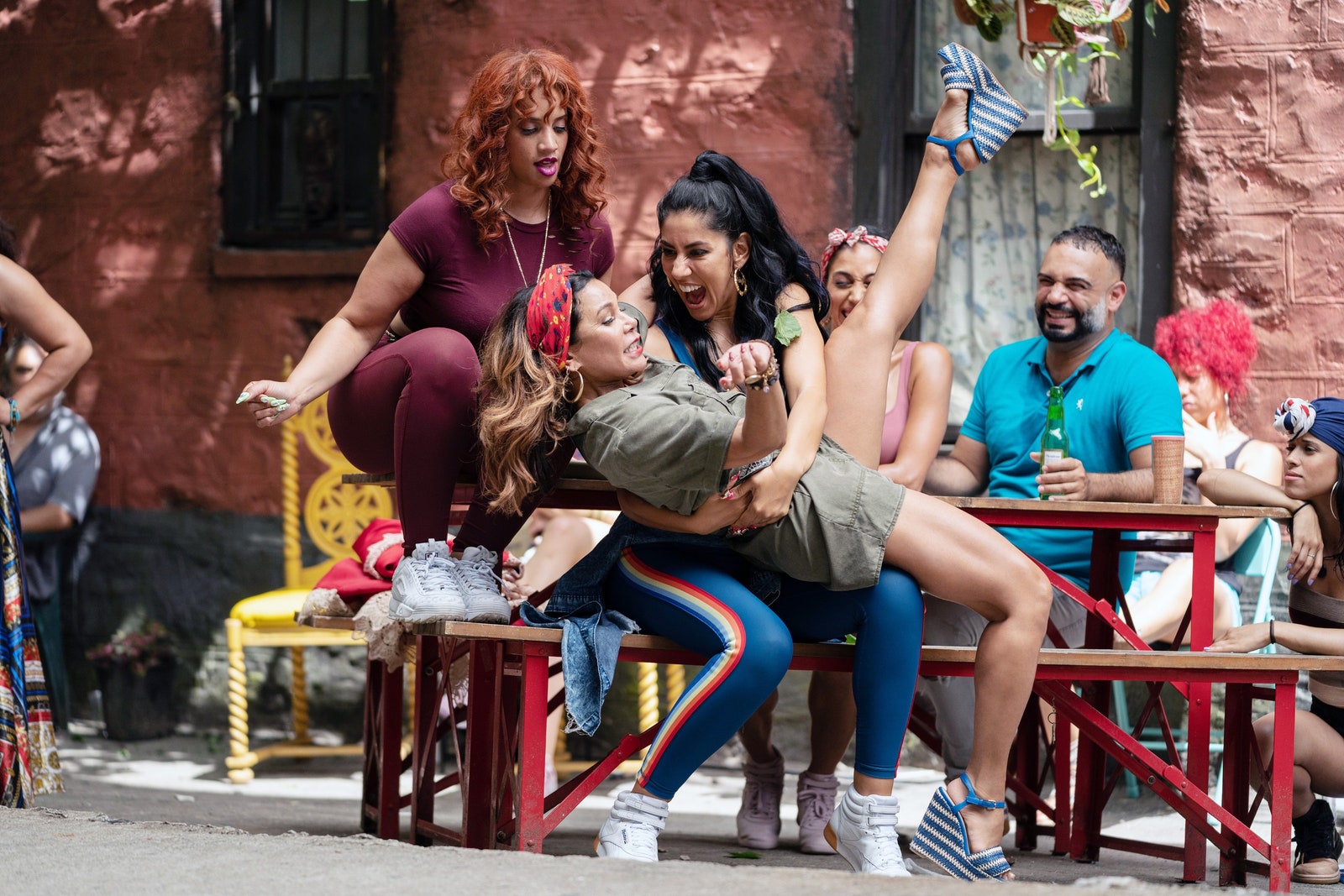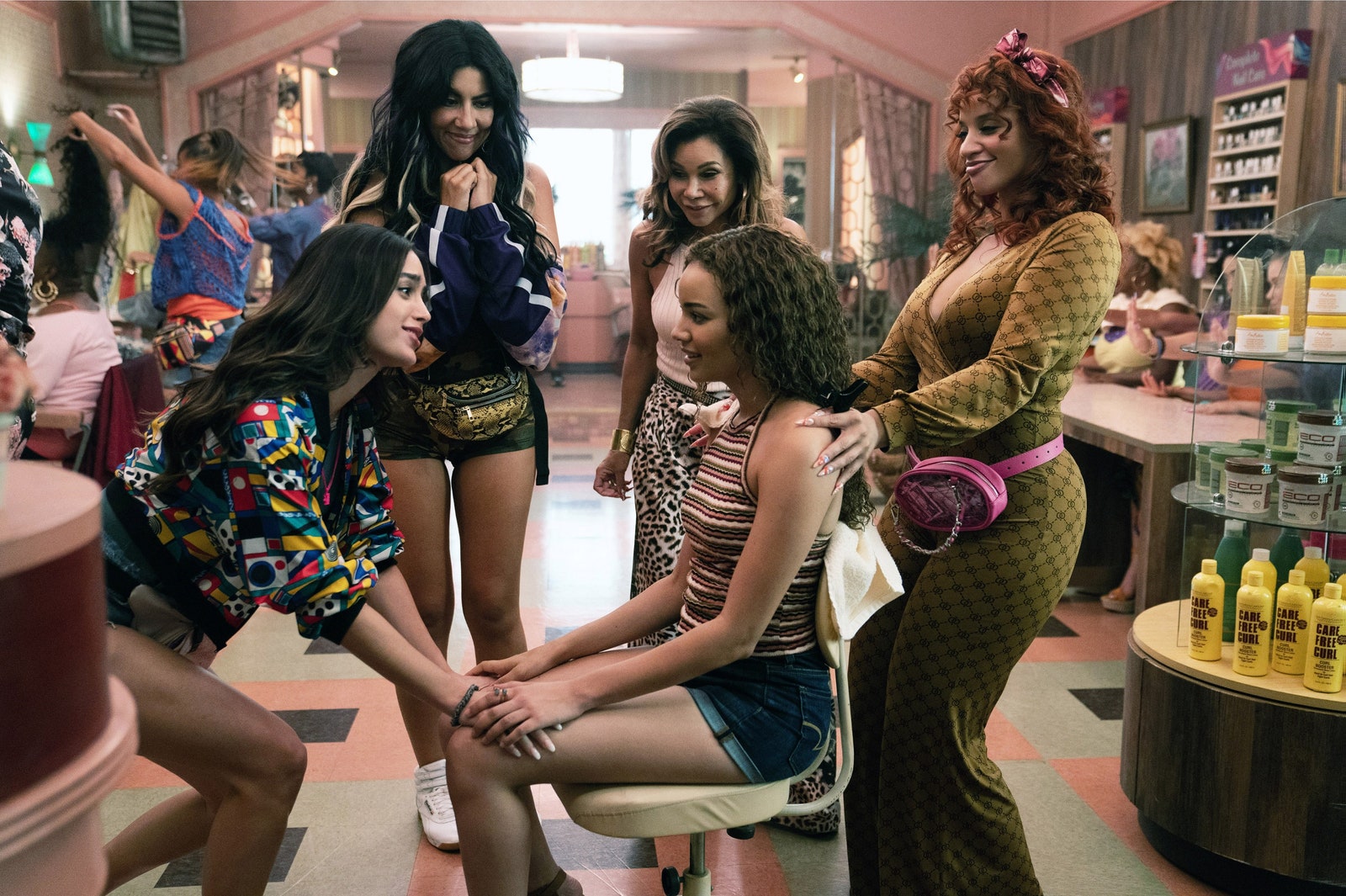The movie adaptation of the hit musical has details so personal they made me laugh, and cry, in ways I never have before.

'In The Heights' Was Made By—and For—Latinx People
When I first found out that Maria in West Side Story was played by a white woman, it felt like a betrayal. Growing up as a self-proclaimed theater kid at a predominantly white middle and high school in New Jersey, I made lists of my dream roles and the productions I hoped my school would put on. But my list was narrowed to the limited Latinx characters I knew and the roles I had seen played by people who looked like me—Maria from West Side Story, Mimi from Rent, Elphaba from Wicked.
For years, Maria and Anita were all I had. But even as a child I noticed things about West Side Story that felt weird—like the over-exaggerated accents, or the fact that none of the Puerto Rican characters spoke Spanish when they were speaking to one another. Still, I regarded the musical and film as the best representation of Puerto Rican people in New York City because it was the only one, and I dreamed of my high school putting on a production of the show as I sang “I Feel Pretty” in the mirror. So when I finally realized that Natalie Wood was not Latinx, the betrayal was deep: I felt the one leading role I thought I could see myself in would inevitably be played by a non-Latinx white person who could be more palatable in that role.
In The Heights is not a caricature of Latinx people, nor does it reduce our culture to a monolith for consumption by white people. It is a celebration of our dreams, our music, our food, and our homes.
The film adaptation, now in theaters, is one of the most-anticipated movie musicals in recent history. With music and lyrics written by Lin Manuel Miranda, the film—and the musical its based on—takes place in the Washington Heights neighborhood of New York City and is, in many ways, a love letter to its Latinx community. The story follows a group of people in El Barrio who are chasing their own sueñitos and face different obstacles in reaching them.
The film itself is a representative of Abuela Claudia’s plea: to assert our dignity in small ways, through little details that show them we are not invisible. As I watched the film with my mom at a screening, the details were so personal that they made us laugh, reach for each other’s hands, and cry in ways we never have before. We smiled at the ingredients for sofrito next to the stove, the inclusion of Puerto Rican slang, the outfits in the nail salon, the large avocados grown in Puerto Rico, the men playing dominos in fold-up chairs, and the decor around the apartments. Although the costuming was bright and loud, it never felt like a caricature. Instead, it felt like a reflection of who we are and the people we know. Even the subtle decision not to include subtitles throughout the entire film made the intention clear: This was not just an adaptation solely for white audiences—it was made by, and for, Latinx people.
But despite all the incredible representation throughout, I was reminded that it is still a wide-release Warner Brothers film with the intention of selling tickets to large audiences. It is undeniable that this production would not have been as anticipated if it wasn’t for the enormous success of Hamilton among both white and Black and Brown audiences. The post-Hamilton nature of the film is palpable—when I saw a screening at the TriBeCa Film Festival this week, audience members cheered when Miranda appeared on stage and laughed at various Hamilton references throughout the film. Meanwhile, my mother and I were shocked when no one seemed to react to Marc Anthony’s cameo.
And there were pieces of In The Heights that may have been too Latinx to include. In the stage version, a seemingly minor but significant plot point is Kevin Rosario’s distrust and disapproval of Benny—the only Black main character, who is pursuing Kevin’s daughter, Nina. His feelings towards Benny can be boiled down to anti-Blackness that is ever-present in the Latinx community. In the original lyrics to “The Club,” it is clear that the racism Benny faced from Nina’s father is impacting him deeply as he drunkenly sings, “He loves to remind me that I’ll never be good enough for your family, for you.” While it may appear to be small, this is an uncomfortable but critical plot point that is just as central to the Latinx experience as beans and rice. And yet, it was left out of this wide release. It is hard not to question why.
I hope that for people who have only heard of In The Heights because of Hamilton see that this is not a retelling of a white story using people of color as actors. This is a telling of the Latinx story in New York City that only begins to celebrate our culture for what it is. Even with the parts that were cut or changed, perhaps to make it more palatable for larger audiences, In The Heights still gave me something I rarely ever get to have: an experience watching a film with my mother when we could both smile at each other through the shared feeling of seeing our own family on the screen and feeling proud instead of ashamed. In The Heights was a reminder to us both that we are not invisible.
Olivia Zayas Ryan is a writer based in New York City.
This story originally appeared on: Glamour - Author:Olivia Zayas Ryan























